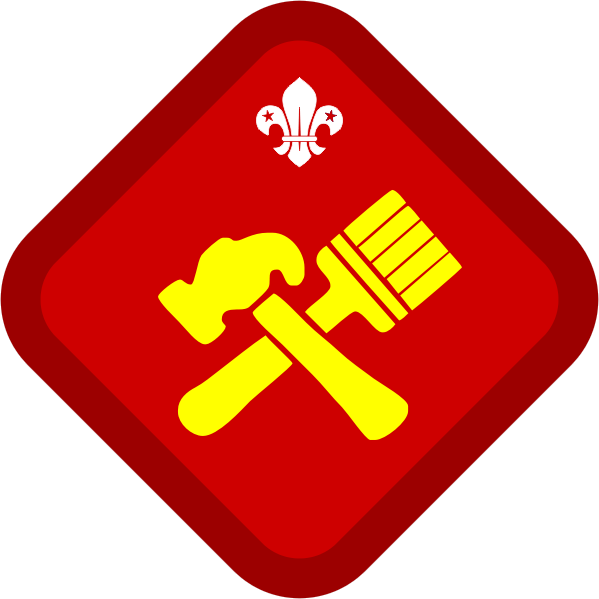
Complete the requirements below:
- Be able to work safety in the home minimising dangers to yourself and others. Have knowledge of:
- Hazard symbols and signs (e.g. toxic, flammable, irritant, electrical danger, slippery surface).
- Know about and use safety equipment (e.g. goggles, gloves, masks, ear defenders).
- Know how and where to turn off main supplies (water, electricity, gas) to the house. Know how to isolate individual electrical circuits at the consumer unit.
- Show or explain how you would deal with four DIY emergencies from the list below:
- Unblocking a sink.
- Renewing a tap washer.
- Curing an airlock in water pipes.
- Patching a leaking pipe.
- Adjusting the float arm of a cistern.
- Fitting an electrical plug to a cable.
- Resetting a mains circuit breaker.
- Changing a light bulb.
- Helping to repair a broken window.
- Repairing a tear in clothes or upholstery.
- Removing common stains e.g. ink, wine, and coffee.
- Take an active part in two major DIY projects, indoors or out, such as:
- Plan a colour scheme for a room and prepare a sample board.
- Prepare and paint, paper or tile the walls of a room.
- Prepare and paint woodwork or furniture.
- Fit a curtain track and hang curtains.
- Make a freestanding storage unit or put up shelves.
- Cover a floor with vinyl overlay, lino, tiles or carpet.
- Hang a door and fit or repair locks and other door furniture.
- Carry out a home security survey and take action to make the house more secure by fitting window locks, marking property with a UV pen, or fitting a burglar alarm.
- Lay a patio or path.
- Build a low wall, barbecue, gate or fence.
- Create and maintain a garden pond.
- Repair bodywork on a car and clean and polish the car.
- Any other project(s) of a similar skill level as agreed with an adult
Notes
The Scout should be made aware that there are regulations that limit what an amateur may do in the home. Adult supervision is required for many of these projects.
